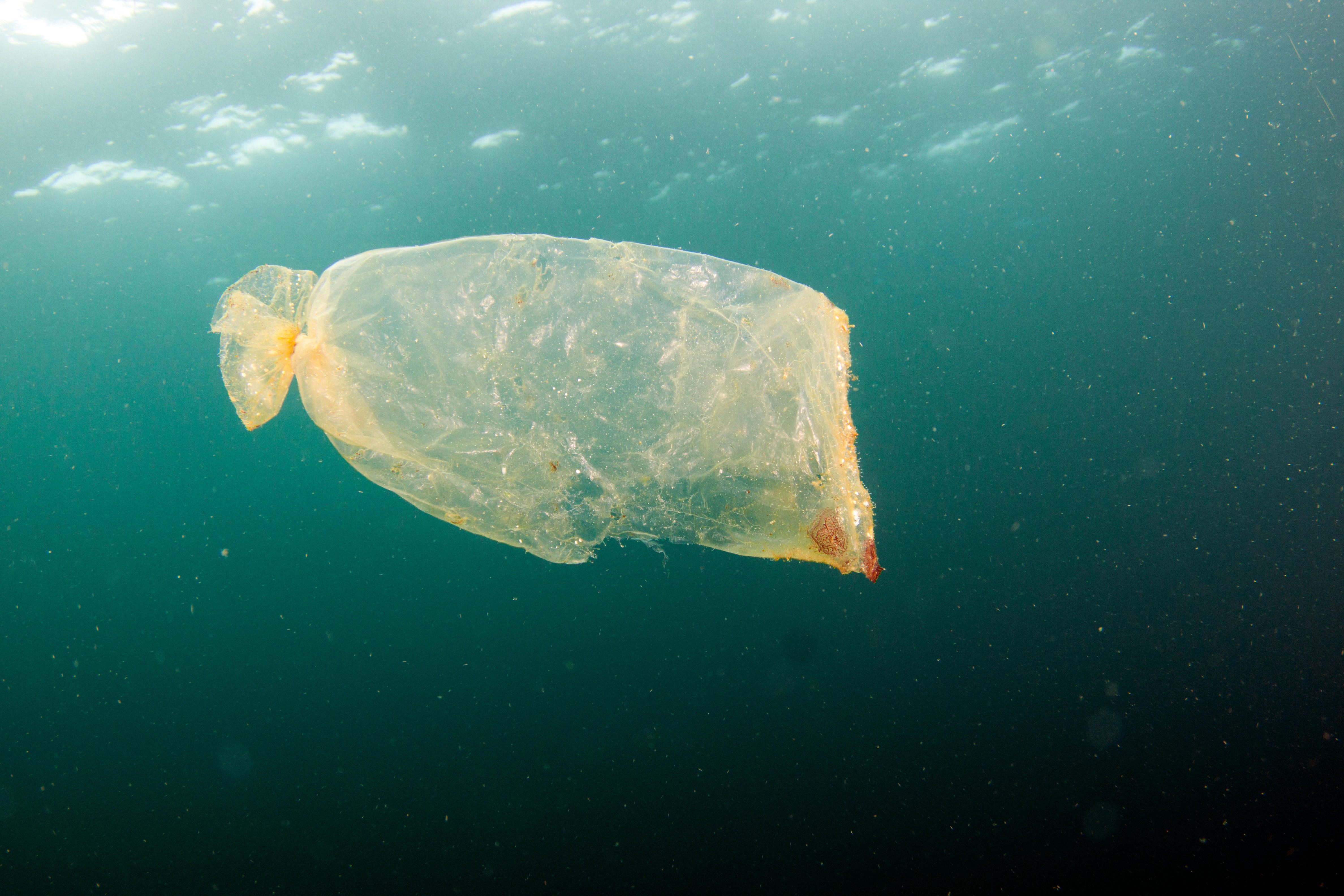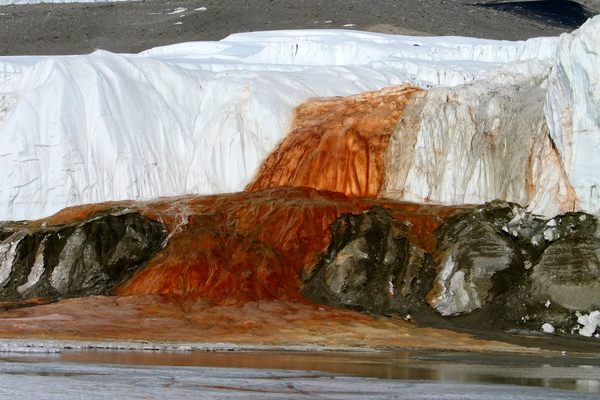Humanity Has Managed to Change Places We’ve Barely Even Visited
From the Mariana Trench to the Moon, we don’t have to be in a place very much to muck it up.

This planet existed for billions of years before we showed up. Earth froze and thawed; it was gashed by glaciers; it was trod by some giant, pretty ridiculous-looking creatures. Since we got here and began tilling the soil and razing forests, building cities and homes and highways, and pushing ourselves out into the vast ocean and up into the endless sky, it’s never been the same. Our fingerprints are just about everywhere on Earth—and even places beyond.
These traces aren’t just the deep, lasting scars or massive, nature-defying infrastructure projects, but also subtle impacts in places we almost never actually visit—ocean crevices, less-trammeled terrain, or even other worlds. Here are three recently uncovered examples of the human knack for disrupting the status quo with even the slightest contact.
Visitors introduced tiny interlopers to Antarctica
Antarctica is a hard place to be a plant. Only around 1 percent of the land is hospitable to plant life, according to the British Antarctic Survey (BAS). Mosses and lichens cluster near the shores like emerald blankets, but few flowering plants can make a go of it. Those that can—namely, hair grass and pearlwort—are found far from the frozen interior, in places such as Signy Island, one of the South Orkney group at the tip of the Antarctic Peninsula.

Those few flowering plants now have new, more mobile neighbors: Eretmoptera murphyi, a flightless midge. The insect isn’t native to the peninsula, but it’s suddenly flourishing there, significantly outweighing the biomass of the other arthropods there combined (there are a few tiny examples who are native to the continent). Researchers suspect that E. murphyi arrived from South Georgia island by hitching a ride with unwitting humans. “Midge larvae … are tiny and cannot be seen easily with the naked eye,” said Peter Convey of the BAS, in a statement. “Tourists and researchers may be bringing them in from their stopovers in the sub-Antarctic and moving them around the continent in the mud on their boots.” Thousands of scientists and tourists visit Antarctica each year—a drop in the bucket of global travel, but enough to offer plenty of opportunities for tiny insects to thumb a ride. Elsewhere on the continent, scientists and tourists also appear to be tracking in pathogens that are sickening local seabirds.
Does a little midge here or there really matter? At the British Ecological Society conference in December 2018, researchers from the BAS and University of Birmingham suggested that the midges, which have an appetite for peat in moss banks, are increasing the amount of nitrogen in the soil, which isn’t good for those native mosses. Broadly speaking, “mosses don’t like fertilized ground, and those found on Signy Island—as for all Antarctic moss species—will have adapted to a low-nutrient environment,” says Jesamine Bartlett, a polar biologist at the University of Birmingham who presented the work at the conference. The midges, Bartlett said in a news release, are “basically doing the job of an earthworm, but in an ecosystem that has never had earthworms.” Changing the composition of soil nutrients could have rippling impacts. Flowering plants, for example, might flourish under these new conditions, but it’s too soon to tell for sure.
But because researchers know that the midge is tough enough to weather the colder reaches of the peninsula, they are investigating ways to curb its spread. Insecticides are prohibited, Bartlett says, but researchers have been scrubbing shoes and equipment with warm water to keep insect larvae in check.
Plastics have reached the deepest crannies of the ocean
Millions of tons of plastics enter the seas each year, and pretty much get everywhere—into sediments, into the bellies of sea creatures, and likely into our own stomachs, too.
The largest of these can choke animals, or cause them to starve. The smaller fibers and pellets are ubiquitous, but exactly how dangerous they are remains an open question as evidence mounts about microplastics’ reach.

In November 2018, a Chinese research team reported in Geochemical Perspectives Letters that the concentration of microplastics in samples of water and sediment of the Mariana Trench, up to 35,787 feet below the surface (the deepest spot in the ocean, where a plastic bag has been spotted), rivaled or exceeded the concentration in shallower waters of the open oceans across the world. By their count, the sediment of the Mariana Trench is flecked with 20 times more microplastics than sediments sampled in the Southwest Indian Ocean and the Southern Atlantic, and twice as many as the samples from the Atlantic Ocean and Mediterranean Sea.
Humans rarely get down to the trench—the most recent was filmmaker James Cameron, who descended there in 2012, and another wealthy adventurer is planning to go next—but we’ve altered its ecology anyway. The researchers suggest that earthquakes and ocean currents can carry these sediments to the depths, meaning that we’re “contaminat[ing] one of the most remote and deepest places on the planet” from a distance.
Astronauts warmed the Moon
The Moon is no stranger to extremes. The surface temperature swings wildly from more than 250 degrees Fahrenheit when the sun strikes with full force, to a miserable -387 degrees Fahrenheit when darkness reigns.
The Moon is close, cosmically, but it is still 239,000 miles away from Earth, and only 12 humans have ever been there. But we’ve definitely left deep, lingering marks, in addition to the tons of historic space junk on the surface.
In the 1970s, when NASA placed temperature sensors on the Moon, research teams back on Earth began to notice a puzzling pattern. The lunar surface seemed to be slowly warming in a way unrelated to its regular temperature fluctuations. At the time, they weren’t quite sure why, but scientists recently did some detective work in tapes from the mission that had been gathering dust for decades. The team, led by Seiichi Nagihara, a geophysicist at Texas Tech University, found that the subsurface temperature on the Moon inched up by several degrees over the years that measurements were collected. When these researchers consulted high-resolution photographs and zeroed in on astronauts’ tracks, they noticed that the footprints and wheel marks had disturbed the light-colored regolith soil, revealing darker material underneath, which is less reflective and absorbs more heat.

“You can actually see the astronauts’ tracks, where they walked,” Walter Kiefer, a scientist at the Lunar and Planetary Institute in Houston, and coauthor of the team’s paper in the Journal of Geophysical Research: Planets, told the CBC in June 2018. “And we can see … where they scuffed dirt up—and what it leaves behind is a darker path. In other words, the astronauts walking on the moon changed the structure of the regolith … in such a way that made it a little bit darker.”
The study authors told the CBC that the few-degree warming isn’t a huge deal—and might even have been a temporary blip—but others have pointed out that the disruption raises some moral quandaries. “Even on Earth, it’s this balance of making progress with science and technology but respecting the system that we were given as human beings,” Western University planetary scientist Catherine Neish explained to the CBC.
The question of our impact off-world is timely at the beginning of 2019, as China has landed the Chang’e-4 probe and rover on the far side of the Moon—the first spacecraft to land softly on the side we don’t see from here. Its targets, according to Scientific American, include impact craters and mares, comprised of ribbons of hardened, ancient lava that Earthlings once mistook for seas on the visible side. There’s plenty to learn about the terrain, and the rover has already begun leaving tracks in the lunar soil as it rolls along. Meanwhile, there’s also more to understand about what our presence means for these places that stir our imaginations.

















Follow us on Twitter to get the latest on the world's hidden wonders.
Like us on Facebook to get the latest on the world's hidden wonders.
Follow us on Twitter Like us on Facebook